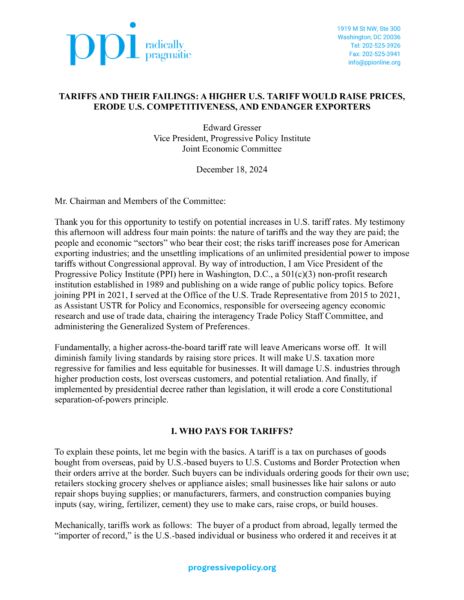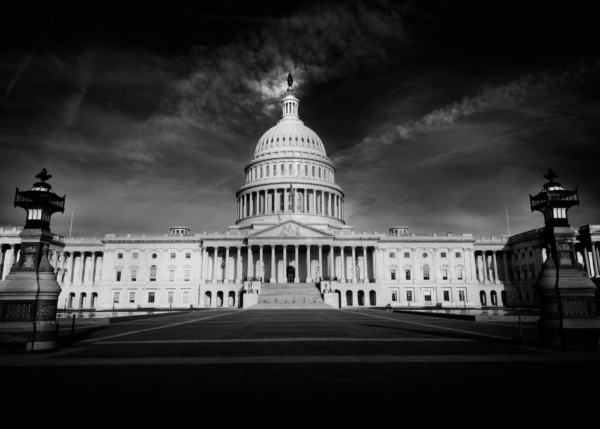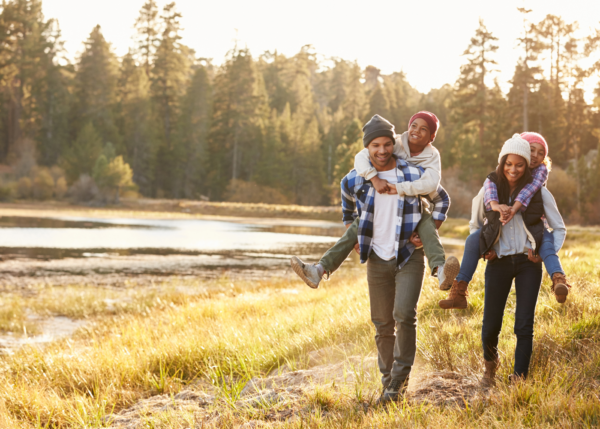FACT: India has 84 of the world’s 100 most air-polluted cities.
THE NUMBERS: Share of annual deaths attributable to air pollution* –
Rest of world: ~8%* World Bank for India, calculations based on national data for Pakistan and Bangladesh.WHAT THEY MEAN:
The annual urban air quality survey by IQ Air (a Swiss air purification company) reports “PM 2.5” concentration per cubic meter of air in 7,812 cities in 134 countries and territories. (Punta Arenas to Nome; Dublin to Vladivostok; Cape Town to Oslo; Cairo, Dushanbe, Suva, Colombo, Chiang Rai, Sydney, etc.) PM 2.5 is “particulate matter” measuring 2.5 microns or less in diameter. Typically it’s smoke, soot, effluent, car exhaust, small acid drops produced by atmospheric chemical reactions, and the like. The survey’s 2024 edition, with figures for 2023, finds the world’s healthiest air in Kuusamo, a Finnish town of 15,000 about 500 miles due north of Helsinki. They breathe in just 0.3 micrograms of particulate matter per cubic meter of air. At the smoggy top, meanwhile, comes Begusarai, a Bihar industrial center with 3 million residents, at 118.9 micrograms per cubic meter.
Begusarai’s case is extreme but also representative: 84 Indian cities and towns show up in the survey’s 100 most air-polluted cities. National capital New Delhi comes in at 92.7 micrograms, Patna 88.2, Gwalior 68.9, and Meerut 78.9. Another six of the top ten are Bangladeshi and Pakistani towns — Lahore ranks fifth, just above New Delhi, and Dhaka is 24th — each with over 50 micrograms of dirt per cubic meter of air. In sum, the belt of fertile green land below the Himalaya and north of the Deccan Plateau, home to over a billion people, has the worst air in the world. This, in part, comes from geography (the Himalaya range is the world’s largest winter air-flow trapper) but also from poor policing of brick kilns, rubbish-burning, crop residue burnoff, vehicle emissions, and other sources policy can, in principle, address.
Three ways to put these numbers in context:
Compared to other big emerging-economy cities: City air is usually smokier in emerging economies than in top-end wealthy countries, but the Pakistan-northern India-Bangladesh belt is unique. For example, IQ Air puts Lagos’ PM 2.5 count at 21.8 micrograms per cubic meter of air, a fifth of the Delhi level. Mexico City’s is 22.3 micrograms, and Istanbul’s at 18.7. Others include Bangkok at 21.7, Cairo a dense 42.7, Shanghai 28.7, and Sao Paulo 14.3.
Compared to the U.S.: American cities and towns nationally averaged 9.1 micrograms, just between Germany’s 9.0 micrograms and Argentina’s 9.2, and in the mid-range of wealthy countries. (See below for a representative list.) Big American cities range from Chicago’s relatively smoky 13.0 micrograms to Tucson’s desert-fresh 3.8; San Juan in Puerto Rico, with a sparkling 2.7 microgram reading, gets IQ Air’s title as the world’s cleanest-air capital. Coraopolis in Pennsylvania fared worst at 19.3 micrograms, but mainly by bad luck — Coraopolis was directly in the path of that June’s Canadian wildfire smoke river, and its 2022 rating was a better 7.2 micrograms.
Compared to other regions: In Europe, the highest continental air pollution rating goes to Plevlja in Montenegro at 40.7 micrograms per cubic meter. (It’s near a coal mine and a Yugoslav-era power plant.) The western hemisphere’s top reading is in Chilean mountain town Coyhaique at 33.2 micrograms. though both are smoky by American and “developed-world-city” standards, neither would make a list of South Asia’s 150 most-polluted cities.
What does this mean? High particulate matter counts aren’t merely unpleasant. The World Bank says they engender or inflame enough illnesses each year – heart diseases, strokes, lung cancer, a smaller number of lung infections — to cause 1.67 million Indian premature deaths to air pollution. That’s nearly a fifth of India’s 9.5 million total annual deaths; the comparable estimate for Bangladesh is about 160,000 of 859,000 deaths, and for Pakistan 128,000 of 1.6 million deaths. Overall, the World Health Organization attributes 6.7 million premature deaths to air pollution worldwide, or one in nine of the world’s annual 61.7 million deaths.
Two concluding thoughts: First, it’s rare to solve a problem before you recognize it, and the survey’s very broad coverage shows rapidly growing worldwide interest in understanding air quality levels. So the high-P.M. 2.5 countries participating in the survey deserve credit for transparency. (The regions least covered are the Middle East and sub-Saharan Africa.) Second, air pollution is not immune to policy. The U.S.’ national PM 2.5 average, for example, was 13.5 micrograms per cubic meter in 2000, so the 9.1 micrograms of 2023 represents a 30% cleanup so far this century. Likewise, Beijing’s 34.1 microgram count, though nothing to brag about, is vastly better than the New Delhi-like 101.6 micrograms in 2013. So policy can help. The cities and national governments at the top end of the list have the information they need to do better, and ought to use it. In this case, the “people are dying” cliché seems perfectly true, lots of them.
Further Reading
IQ Air’s World Air Quality 2024 report.
The U.S. Environmental Protection Agency explains “PM 2.5” and U.S. clean air laws.
And the World Health Organization on air pollution as a cause of death.
Top and bottom:
Kuusamo, just south of the 66th parallel — for American readers, about 80 miles north of Nome and Fairbanks –advertises excellent skiing seven months a year, as well as the world’s freshest air. If you’re planning a vacation, though, note that in this winter season, Kuusamo gets less than four hours of sunlight. Tomorrow’s dawn is 10:14 a.m., and darkness returns by lunchtime at 2:06 p.m.
Begusarai residents, meanwhile, can check in with Bihar’s air quality monitoring service to see whether it’s safe to go outside.
South Asia:
al-Jazeera asks why South Asia’s air is so bad.
The World Bank looks at ideas and air quality policy in India.
… and finds overuse of brick kilns and home ovens burning wood and other biomass as core causes of Bangladesh’s highest-in-the-world national PM 2.5 rating.
Pakistan’s College of Physicians and Surgeons looks at health and air quality challenges.
Rankings (cities):
Here’s a selection of 60 of the report’s 7,812 cities, illustrating (a) the worldwide range from Kuusumo’s 7,812th-place 0.3 micrograms per cubic meter of air to Begusarai’s top-ranked 118.9, and (b) the U.S. range (American cities in italics) from the low of 1.9 micrograms in Wilson, N.C., to Coraopoli
| Rank | City | PM 2.5 micrograms per cubic meter |
| 1 | Begusarai, India | 118.9 |
| 2 | Gauwahati, India | 105.4 |
| 5 | Lahore, Pakistan | 99.7 |
| 6 | New Delhi, India | 92.7 |
| 24 | Dhaka, Bangladesh | 65.8 |
| 231 | Jakarta, Indonesia | 43.8 |
| 233 | Hanoi, Vietnam | 43.7 |
| 258 | Cairo, Egypt | 42.4 |
| 284 | Kathmandu, Nepal | 42.0 |
| 321 | Chengdu, China | 39.0 |
| 454 | Beijing, China | 34.1 |
| 488 | Accra, Ghana | 33.2 |
| 667 | Shanghai, China | 28.7 |
| 958 | Phnom Penh, Cambodia | 22.8 |
| 999 | Mexico City, Mexico | 22.3 |
| 1048 | Lagos, Nigeria | 21.8 |
| 1052 | Bangkok, Thailand | 21.7 |
| 1206 | Seoul, Korea | 19.7 |
| 1246 | Coraopolis, PA | 19.3 |
| 1301 | Istanbul, Turkey | 18.7 |
| 1315 | Thessaloniki, Greece | 18.5 |
| 1633 | Jerusalem, Israel | 15.7 |
| 1659 | Hong Kong, China | 15.5 |
| 1711 | Tegucigalpa, Honduras | 15.1 |
| 1771 | Makati, Philippines | 14.8 |
| 1840 | Sao Paulo, Brazil | 14.3 |
| 2026 | Singapore, Singapore | 13.4 |
| 2071 | Warsaw, Poland | 13.2 |
| 2086 | Florence, Italy | 13.1 |
| 2120 | Chicago, IL | 13.0 |
| 2210 | La Paz, Bolivia | 12.6 |
| 2357 | St. Louis, MO | 12.2 |
| 2563 | Washington, D.C. | 11.7 |
| 2627 | New York, NY | 11.6 |
| 2906 | Atlanta, GA | 11.0 |
| 2990 | Toronto, Canada | 10.8 |
| 3158 | Houston, TX | 10.6 |
| 3179 | Berlin, Germany | 10.5 |
| 3196 | Nairobi, Kenya | 10.5 |
| 3422 | Marseilles, France | 10.1 |
| 3702 | Tokyo, Japan | 9.7 |
| 3754 | Buenos Aires, Argentina | 9.6 |
| 3890 | Los Angeles, CA | 9.5 |
| 4053 | Lviv, Ukraine | 9.3 |
| 4279 | Madrid, Spain | 9.0 |
| 4672 | New Orleans, LA | 8.6 |
| 4830 | London, United Kingdom | 8.4 |
| 5215 | Copenhagen, Denmark | 7.9 |
| 5281 | Boston, MA | 7.9 |
| 5470 | Lisbon, Portugal | 7.0 |
| 5828 | York, United Kingdom | 7.1 |
| 5853 | Missoula, MT | 7.1 |
| 5888 | Sapporo, Japan | 7.0 |
| 6305 | Denver, CO | 6.4 |
| 6575 | Cape Town, South Africa | 5.9 |
| 6872 | Stockholm, Sweden | 5.4 |
| 7087 | Sydney, Australia | 5.0 |
| 7100 | Tallin, Estonia | 4.6 |
| 7635 | Tucson, AZ | 3.5 |
| 7692 | Wellington, New Zealand | 3.1 |
| 7753 | San Juan, PR | 2.7 |
| 7806 | Wilson, NC | 1.9 |
| 7812 | Kuusamo, Finland | 0.3 |
Rankings (countries):
Shifting from cities to countries, only ten countries meet WHO’s “healthy air” standard of 5.0 micrograms of particulate matter per cubic meter of air. Most are small islands such as Tahiti, Mauritius, Bermuda, and Iceland. The best big-country records are Australia’s and New Zealand’s, with Baltic Sea countries Estonia, Finland, and Sweden also very good. On any given afternoon, Bangladesh’s 79.9 micrograms of particulate matter per cubic meter means Bangladeshis are breathing 20 times as much dirt as New Zealanders, with their best-in-class 4.3 micrograms. A sample:
| Rank | Country | PM 2.5 micrograms per cubic meter |
| 1. | Bangladesh | 79.9 |
| 2. | Pakistan | 73.7 |
| 3. | India | 54.4 |
| 7. | United Arab Emirates | 43.0 |
| 14. | Indonesia | 37.1 |
| 19. | China | 32.5 |
| 29. | Ethiopia | 29.0 |
| 35. | Nigeria | 23.9 |
| 46. | Mexico | 20.1 |
| 50. | Korea | 19.2 |
| 74. | Poland | 14.3 |
| 83. | Brazil | 12.6 |
| 96. | Japan | 9.6 |
| 102. | United States | 9.1 |
| 103. | Germany | 9.0 |
| 112. | United Kingdom | 7.7 |
| 117. | Jamaica | 7.1 |
| 124. | Sweden | 5.1 |
| 128. | Australia | 4.5 |
| 129. | New Zealand | 4.3 |
| 134. | French Polynesia | 3.2 |
America’s worst air day:
The 2023 Canadian wildfire smoke event peaked on June 8. That day’s PM 2.5 readings, the 21st century’s worst for the United States, reached 196 micrograms per cubic meter in New York and 141 micrograms in Washington, D.C. — that is, levels typical of a bad but not unusual week in northern Indian cities. The day’s national average was 27.5 micrograms. The Guardian looks back.
… and the Washington Post lets you look up that day’s PM 2.5 ratings by city:
And last:
A morbid chart from Our World in Data counts total annual world deaths. Note the sharp spike in 2020 during the COVID pandemic, from 58.4 million deaths in 2019 to 69.7 million in 2020, followed by a drop back to last year’s 61.7 million.
ABOUT ED
Ed Gresser is Vice President and Director for Trade and Global Markets at PPI.
Ed returns to PPI after working for the think tank from 2001-2011. He most recently served as the Assistant U.S. Trade Representative for Trade Policy and Economics at the Office of the United States Trade Representative (USTR). In this position, he led USTR’s economic research unit from 2015-2021, and chaired the 21-agency Trade Policy Staff Committee.
Ed began his career on Capitol Hill before serving USTR as Policy Advisor to USTR Charlene Barshefsky from 1998 to 2001. He then led PPI’s Trade and Global Markets Project from 2001 to 2011. After PPI, he co-founded and directed the independent think tank ProgressiveEconomy until rejoining USTR in 2015. In 2013, the Washington International Trade Association presented him with its Lighthouse Award, awarded annually to an individual or group for significant contributions to trade policy.
Ed is the author of Freedom from Want: American Liberalism and the Global Economy (2007). He has published in a variety of journals and newspapers, and his research has been cited by leading academics and international organizations including the WTO, World Bank, and International Monetary Fund. He is a graduate of Stanford University and holds a Master’s Degree in International Affairs from Columbia Universities and a certificate from the Averell Harriman Institute for Advanced Study of the Soviet Union.













